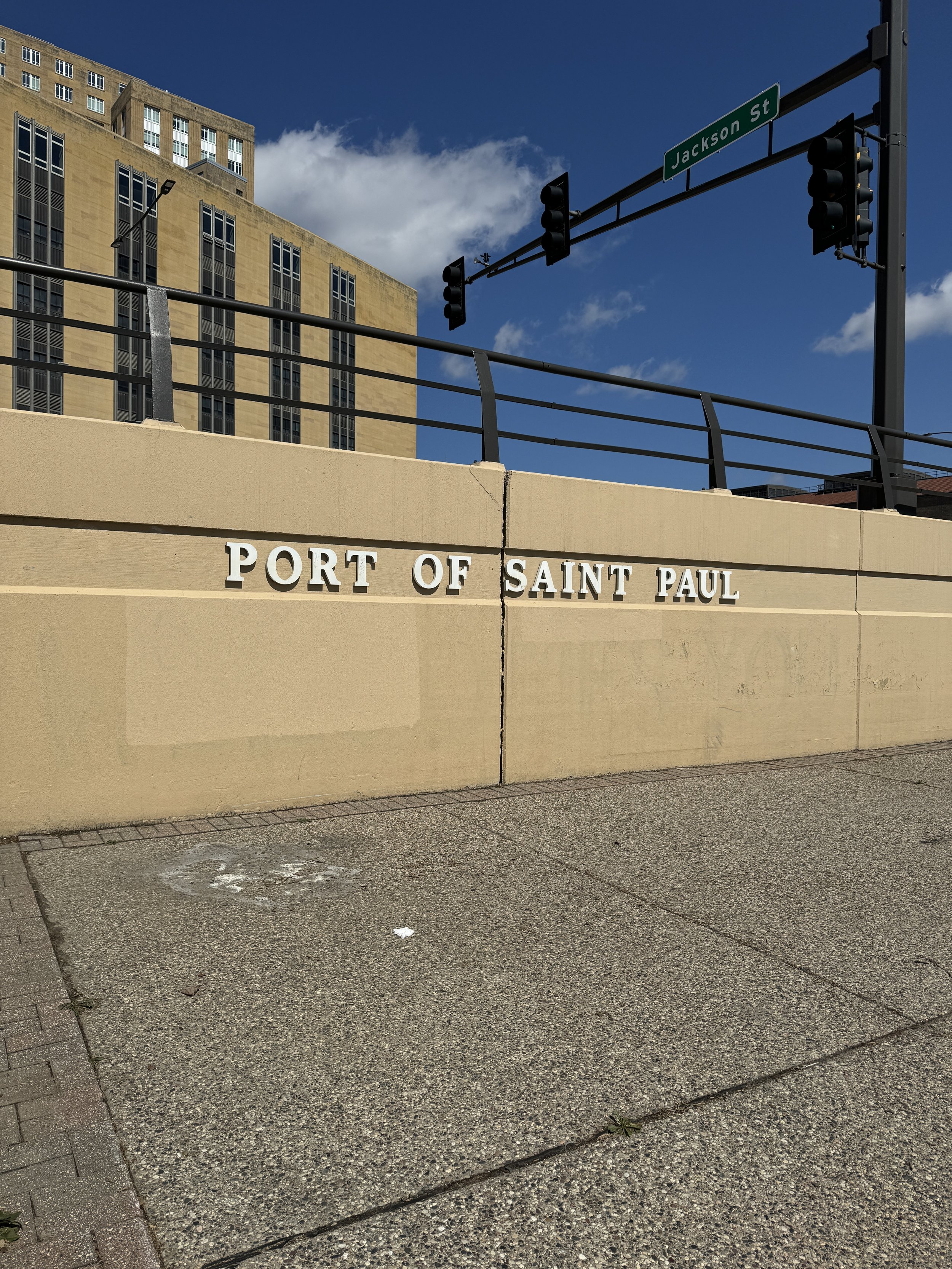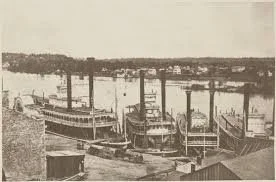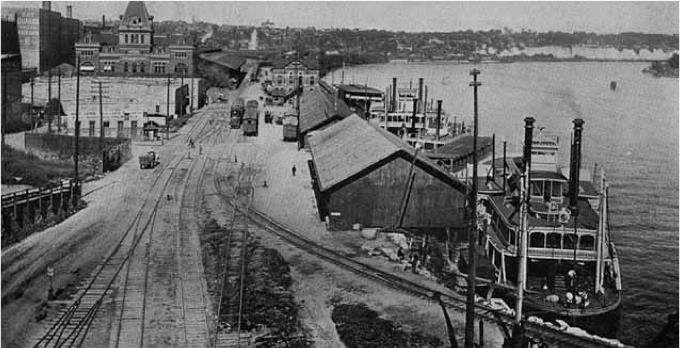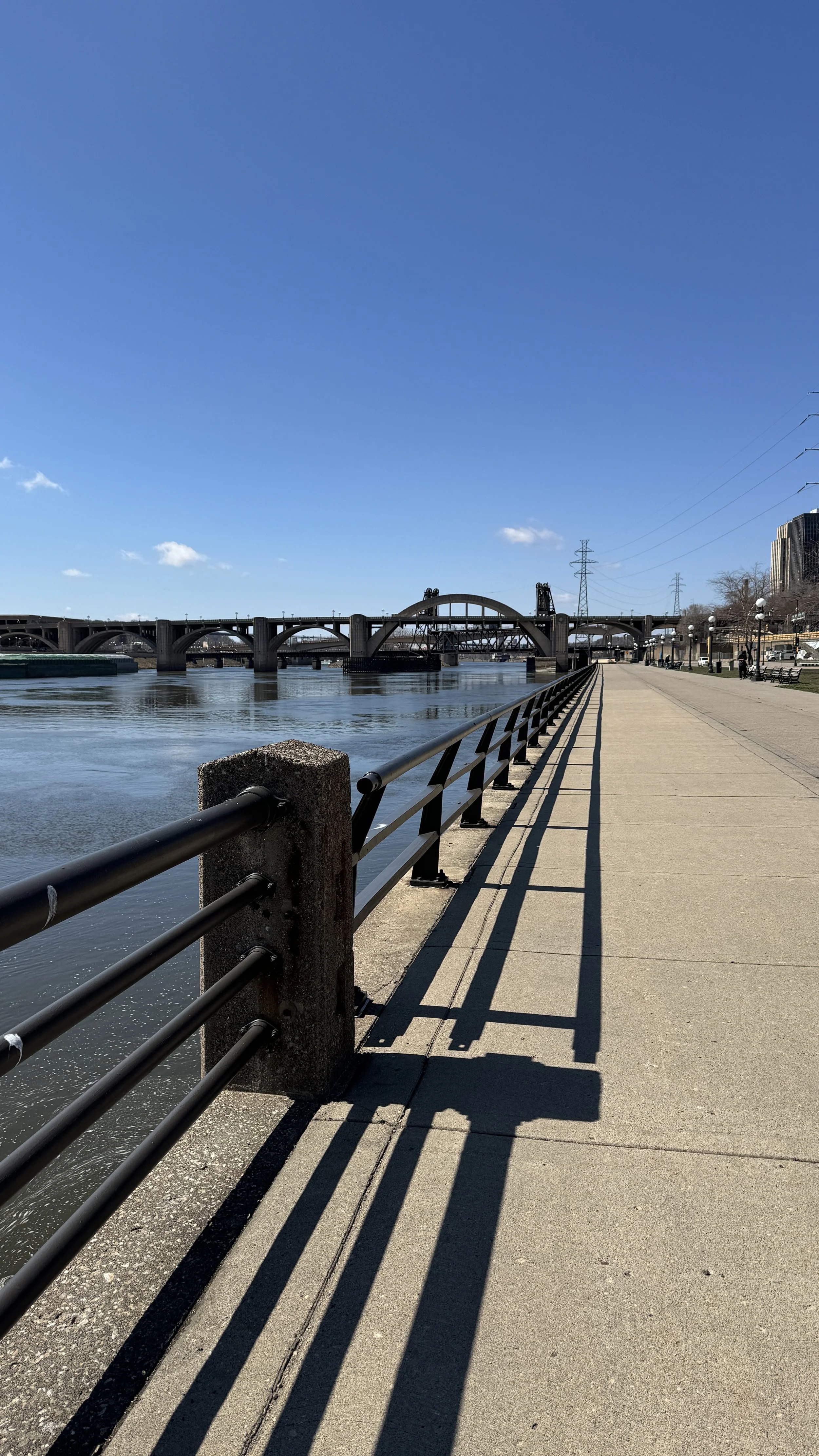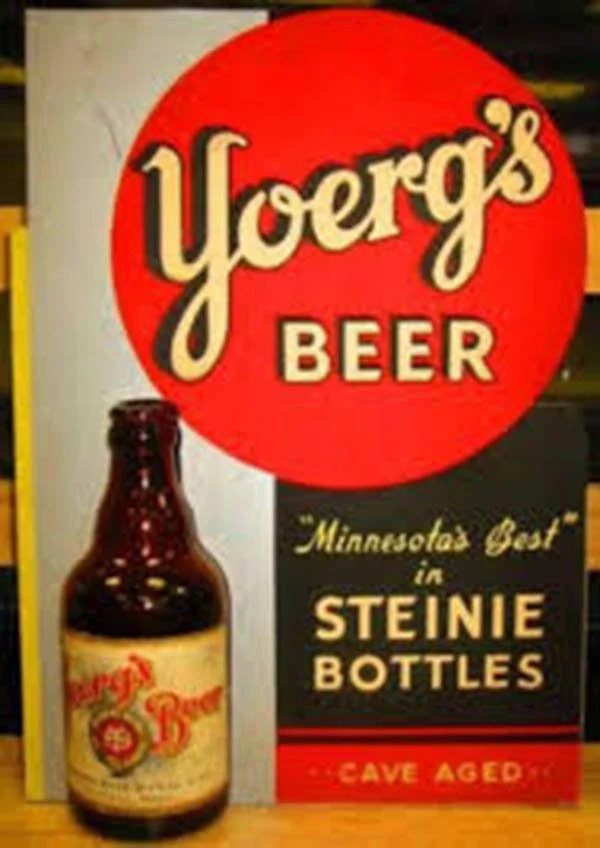Lower Landing
The Port of Saint Paul is pretty quiet today, (unless you count the barges docked nearby or the occasional river cruise that passes by) but long before the arrival of any Europeans, the Dakota were pulling their canoes up on shore here. Their village, Kaposia, took advantage of this prime location and they came here each summer. It is a break in the sandstone bluffs that line the shores, blocking entry and exit. In the early 1800s, soldiers were arriving on keel boats to build Fort Snelling. They saw the same advantages in the location.
The small steamboat “Virginia” (the first to travel up the Mississippi) only made it as far as Fort Snelling in 1823. This was a massive milestone for the growing village. It meant that supplies, mail and people could be brought up the river much more quickly than brought by land.
A toddler girl named Charlotte Ouisconsin Clark saw the “Virginia” arrive at the Fort. You can read more about her fascinating life full of firsts HERE.
By the time Minnesota became a territory in 1849, horses and wagons were still very expensive. Besides, there were very few roads. If you were traveling, you were on foot. Maybe you were lucky enough to have a cart. For those that had a little bit of money, traveling by boat on the river was a much better option.
The Head of Navigation
Saint Paul was the farthest upriver on the Mississippi that any large boats could reach because any further and the boats would hit the rocks and rapids that led to Saint Anthony Falls. It was the “head of navigation” and became the entrypoint into Minnesota for all of the immigrants and tourists heading to the west. The “Lower Landing” was reached first from the south and gave “Lowertown” its name. Just a short distance UP the river is the UPPER landing that was popular with steamboats traveling on the Minnesota River.
By 1858, over one thousand steamboats were visiting the landing during the short summer months when the river wasn’t frozen. On any day, up to a dozen steamboats and Packet boats would be lined up at the dock with teams working to load or unload hundreds of passengers and tons of commercial goods. In ONE year, 1856 - 1857, over 90,000 people came up the river to Minnesota. That’s almost double the capacity of the Gopher Football stadium at the University of Minnesota. The Landing was controlled chaos and needed a strong manager to keep it in order.
The Early Empire Builder
At this point it might seem too soon to start talking about James J. Hill. He is more well-known for his contributions to the railroad network that earned him the nickname, “The Empire Builder”. However, Hill wasn’t BORN a railroad magnate. In fact, when he arrived in Saint Paul in 1856 (along with the other 89,999 people), he only had two marketable skills: good handwriting and the ability to add a column of figures. Those two things landed him a job at the Lower Landing as a clerk for one of the busy steamship companies.
Although Hill wanted to serve the Union during the Civil War, he was blind in one eye due to a childhood accident. He wasn’t able to join other men his age going off to war. Instead, he became the wharf master at the Lower Landing and made sure soldiers and supplies stayed on schedule.
In 1865, Hill revolutionized the wharf. At that time, teams of men leading horses and carts were necessary to transfer tons of goods from the ships to the railroads a few hundred yards away. Hill decided to build warehouses at dock level so that goods could be unloaded directly from the boats, protected from the weather, and straight onto rail cars that could pull up alongside or directly into storage. This cut out the middle men and saved the company money.
By taking a broad view of the transportation network as a whole and taking on details that others might claim, “That’s not MY problem”, Hill made himself an authority, indispensable and in charge. Soon, he would take the same insights and turn his attention to the railroads that would make him famous.
Lambert’s Landing
The Landing is also known as Lambert’s Landing. It was renamed in 1940 to honor Colonel George C. Lambert when the Works Progress Administration (WPA) was doing work to reconstruct it. Lambert was crucial in convincing the government to support and fund a lock and dam system that would create a 9-foot deep channel on the Mississippi River all the way to the gulf of Mexico. He saw the potential in river traffic to transport commodities like grain, scrap iron, coke and coal.
Just Barge In
Demand for transportation to move more people and more goods just kept growing. Trains made an enormous addition and was able to transport inland away from bodies of water. However, trains require fuel and are expensive to maintain and run. In response, river traffic turned to barges pushed up or down river by tow boats. It is a much, much cheaper alternative if the shipper or receiver isn’t in a rush.
A few barges are always tied up at the Lower Landing today, making their way down the Mississippi River. A few steamboats operate tours out from a small landing on Harriet Island. Otherwise, looking at the landing today you would never guess that it was once the epicenter of transport into the Northwest Territory.



